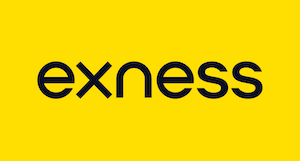-
Best Forex Brokers
Our top-rated Forex brokers
-
Brokers for Beginners
Start trading here
-
ECN Brokers
Trade with Direct Market Access
-
Forex Demo Accounts
Learn to trade with no risk
-
Lowest Spread Brokers
Raw spreads & low commissions
-
Islamic Account Brokers
Best accounts for Muslim traders
-
Market Maker Brokers
Fixed spreads & instant execution
-
MetaTrader 4 Brokers
Top MT4 brokers in Philippines
-
MetaTrader 5 Brokers
Top MT5 brokers in Philippines
-
cTrader Brokers
Top cTrader brokers in Philippines
-
All Trading Platforms
Find a platform that works for you
-
Copytrading Brokers
Copy professional traders
-
Forex Trading Apps
Trade on the go from your phone
The latest figures from Eurostat, released last Friday, reveal that the eurozone’s inflation rate rose to 2.3% in November, compared to 2.0% in October. While slightly below the 2.4% anticipated by markets, it remains above the European Central Bank’s 2% target—expected to be achieved by 2025.
At the same time, core inflation (the cost of goods and services excluding food and energy prices) remained unchanged from the previous month at 2.7%, also marginally below the expected 2.8%.
According to the report, services were the largest contributors to inflation, followed closely by food, alcohol, tobacco, and non-energy industrial goods.

Source: Eurostat
Rate Cuts on the Horizon?
As the ECB’s next meeting on December 12 approaches, the pressing question is whether interest rates will be lowered. Market expectations suggest the answer is yes, with a 25-basis-point cut already priced in. Given the latest data, a larger 50-point reduction now seems increasingly unlikely.
Should these expectations come true, it could signal that the ECB is moving away from the crisis-driven strategy that has defined its monetary policy since 2022 in the aftermath of the pandemic. A potential rate cut would not only mark the end of the strictest phase of the disinflation process but also indicate a shift toward a more forward-looking approach.
Philip Lane, Chief Economist at ECB, stated in a podcast with the Financial Times:
“Once . . . the disinflation process [is] completed, then I think monetary policy needs to be essentially forward-looking, and to be scanning the horizon for what are the new shocks that might lead to less or more inflation pressure”.
He added that the ECB would likely transition from focusing on disinflation to addressing new challenges at some point, likely next year—maintaining inflation sustainably around the 2% target. After years of tight monetary policies, this could signal that the ECB believes the worst is behind us, though caution remains necessary moving forward.
How Will Markets Respond?
Investors anticipating a more dovish monetary policy could see this development as beneficial for European government bonds and equities. However, the euro may weaken if the ECB takes a softer stance compared to other central banks, such as the Federal Reserve. A larger-than-expected rate cut could exacerbate the euro’s decline against the dollar.
At the same time, external factors, such as the possibility of higher tariffs on European goods under incoming U.S. President Donald Trump, could increase uncertainty and harm businesses of all sizes across the EU and globally.
Stay updated
This form has double opt in enabled. You will need to confirm your email address before being added to the list.































